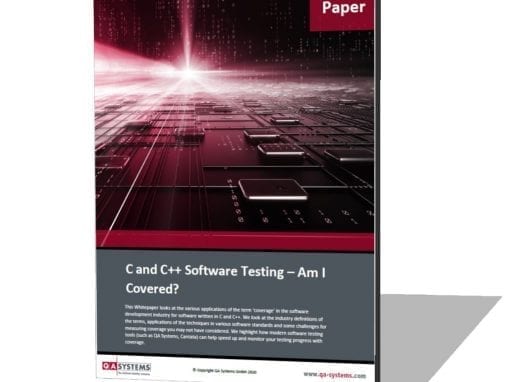Software Drives Advances in Medical Technology
Over the last few years, medicine has been a catalyst for driving progress in the innovation of medical devices and treatment plans. There is an emphasis on the extension of lifespans and improving the lives of humans. As there continues to be advances in breakthrough technologies, the introduction of leading-edge medical equipment continues.
There is an emphasis on products that deliver less expensive, faster, more efficient patient care. Digital technology is becoming embedded in every area of healthcare delivery. Medical devices are becoming more and more complex and the benefits of technology innovation to patients and providers is immeasurable.
Health technologies are a key part of the healthcare experience. Artificial intelligence and medical machine learning are assisting medical teams to streamline how patients are treated. Ingestible medical devices with circuits and sensors, have shown to be technologically relevant, in the delivery of drugs and optical imaging for diagnosis of diseases. This extends to both the diagnosis and treating of diseases. Robots are assisting humans in surgery and are assisting doctors in examining and treating patients, transporting medical supplies, and disinfecting hospital rooms. They are also target therapy to specific areas of the body in the case of tumors or bacterial infections.

Machine vision is being utilized for medical diagnostics, viewing of scans and medical images. Neurological and cardiovascular illnesses are widely viewed using computers and resultant diagnosis are made. Virtual reality and augmented reality are beneficial for surgery simulation and training. This also provides education for medical professionals and patients to understand their conditions and plans for ongoing treatments.
The 5G network capability increases the speed to share large imaging files so specialists can view and recommend proper care scenarios. Artificial intelligence, Augmented and Virtual Reality, provides the abilities for remote monitoring of patients.

Medical devices are becoming more complex as the needs for patient treatment solutions increases. It is software embedded in these devices that is increasingly the driver for differentiation and added value. Medical devices are only licensed for use after strict regulatory approvals, and that of course includes the software within them.
IEC 62304:2006 ‘Medical Device Software – Software Life-cycle processes’ is an international harmonized standard for medical devices which contain software, accessories to medical devices that contain software, and “standalone software” that meets the definition of a device or accessory.
In the European Union compliance with IEC 62304 satisfies the Medical Devices Directive 93/42/EEC (MDD) with amendment M5 (2007/47/EC) as related to software development. In the United States, the US FDA will also accept IEC 62304 as evidence that medical device software has been designed to an acceptable standard, and covers following regulatory processes: 510(k), IDE, PMA, HDE, Software Validation (FDA Recognition List Number: 020).
Within IEC 62304 there are requirements for software testing to the highest standards based on the critical nature (Class) of the medical device. So for medical device developers undertaking this software testing it is helpful if they can leverage the existing tools utilized in a development environment to support efficient assemblage of code, and the CI/CD process.
For the unit and integration testing stages in particular, test automation during development is also the most efficient means to meet the verification requirements of the IEC 62304 standard. The thoroughness of these tests also needs to be demonstrated using code coverage. For example, for a Class II (or Class B) device this means achieving 100% coverage of all the decisions in the code. of the code.
Code coverage is not just about demonstrating enough testing but can also lead to code optimization, in removing code that is not required, making the code execute more efficiently.

Project Design and Development Considerations
Control
– Medical devices that are software based have a high risk of issues arising later in development or during device validation.
Reduce Uncertainty
– With complexity of software development, there needs to be diligence at both the requirements and design phases and throughout the device’s evolution.
Software Tools
– A robust set of software testing and certification tools is important to verify that the code will work properly and to eliminate the issues and monetary losses/damages, and warranty costs associated with faulty equipment operation and patient expiration.
– Support the ability for companies to continue to sell their products to the market without the interruptions from lawsuits and product issues in the field.
– The tool must provide advanced technical capabilities for: automatic test case generation, control of function calls (e.g., mocking/stubbing), intuitive code coverage and certification evidence and ready results reporting.
– A more process-oriented objective is important to ‘shift-left’ software verification activities, finding them early in the project.
– Ensures that software tests are created to the required standard, and follow the tool’s Safety Manual guidance for their development and execution.
– The Graphical User Interface (GUI) should support a tree view which is vital for assessing test case values with the ability to edit test cases in the user interface to save time with typing.
Summary
Advances in medical equipment are happening every second in every day. There is a need to support the operational aspects of this equipment utilizing fully tested C and C++ code that is verified to the IEC 62304 standard.
This is important in support of the diagnosis of illnesses, and saving patient’s lives, taking advantage of the innovative technology available today, which includes vision and artificial intelligence.
The depth and robustness of testing capabilities within Cantata the unit & integration testing tool from QA Systems, make it a logical choice, to be part of the medical device software development process. The ever-increasing demands of technology and the importance of quality software, dictates the requirement for a higher and deeper level of testing. Cantata supports these requirements is pre-certified as a class T2 tool for use under IEC 62304 up to Safety Class III (C) and provides the evidence to achieve the required level of software safety certification for medical devices.




